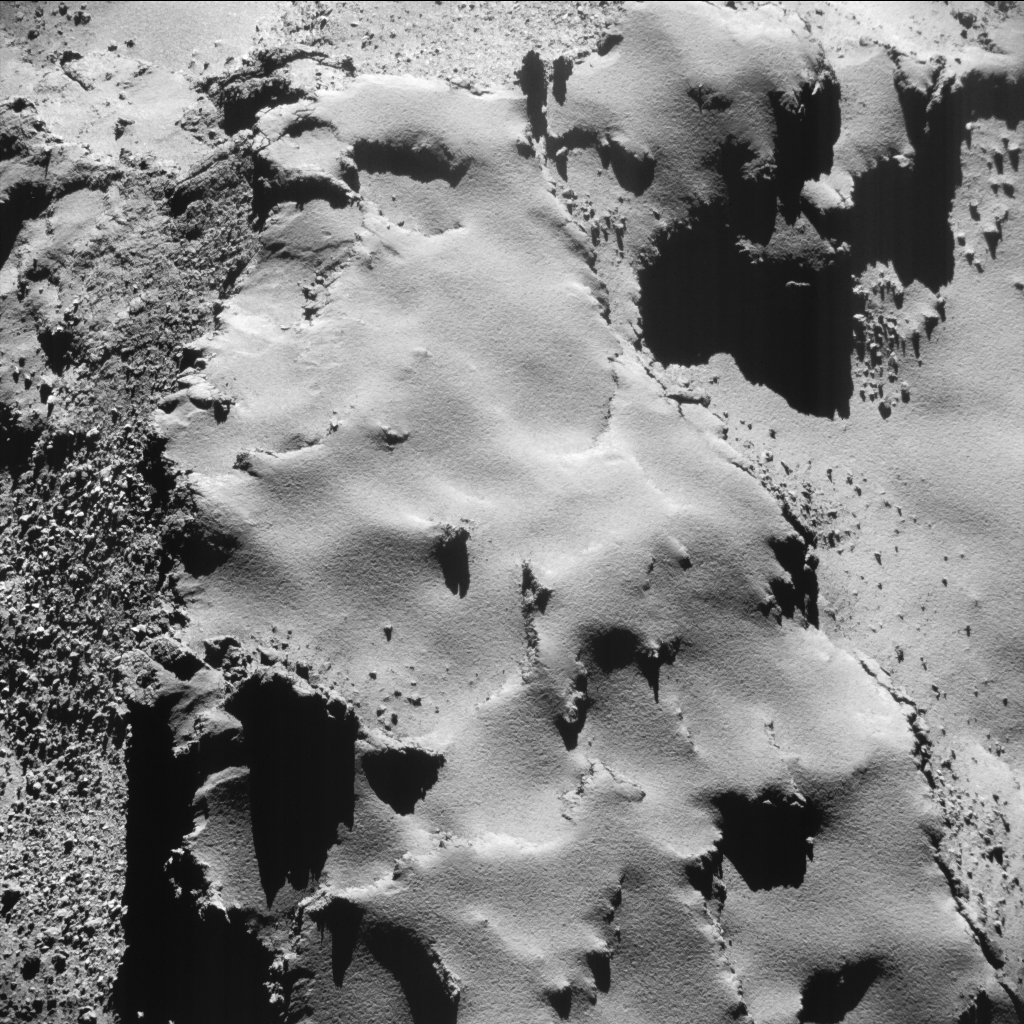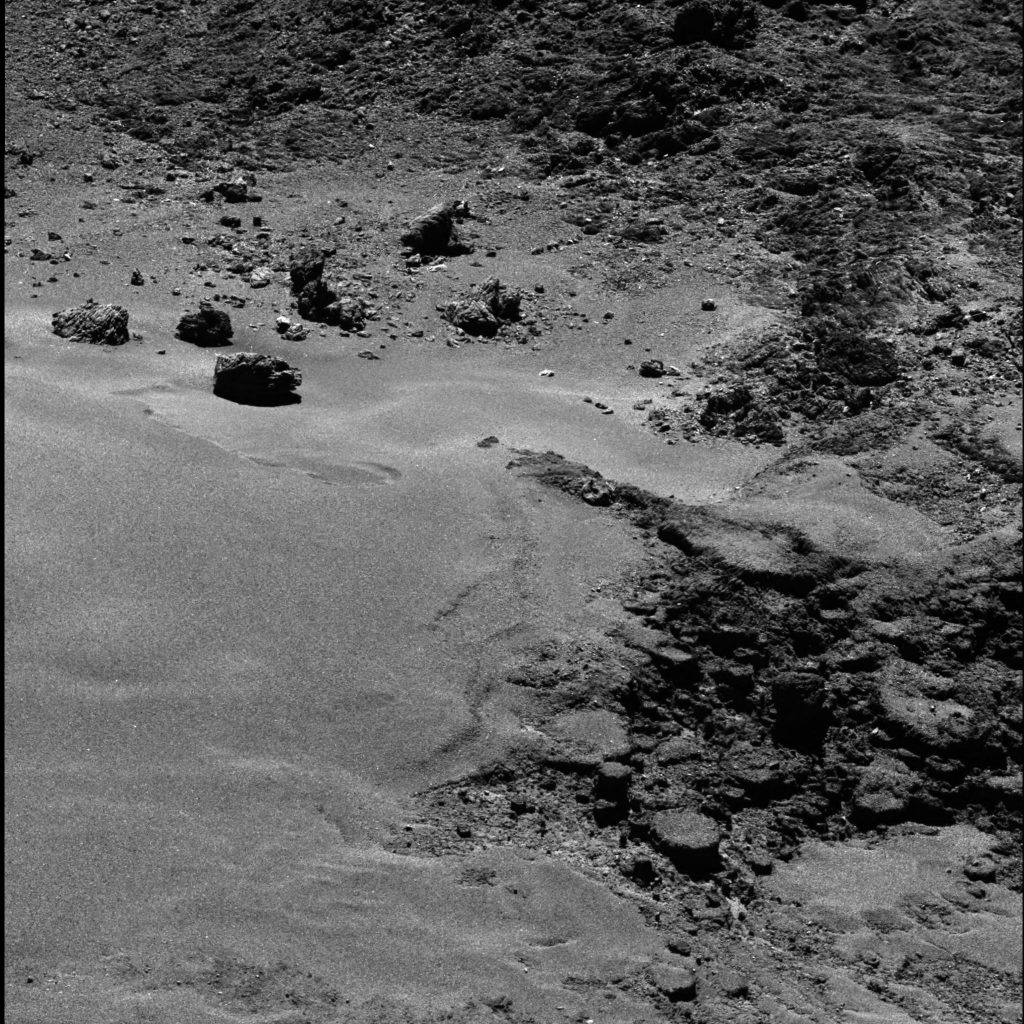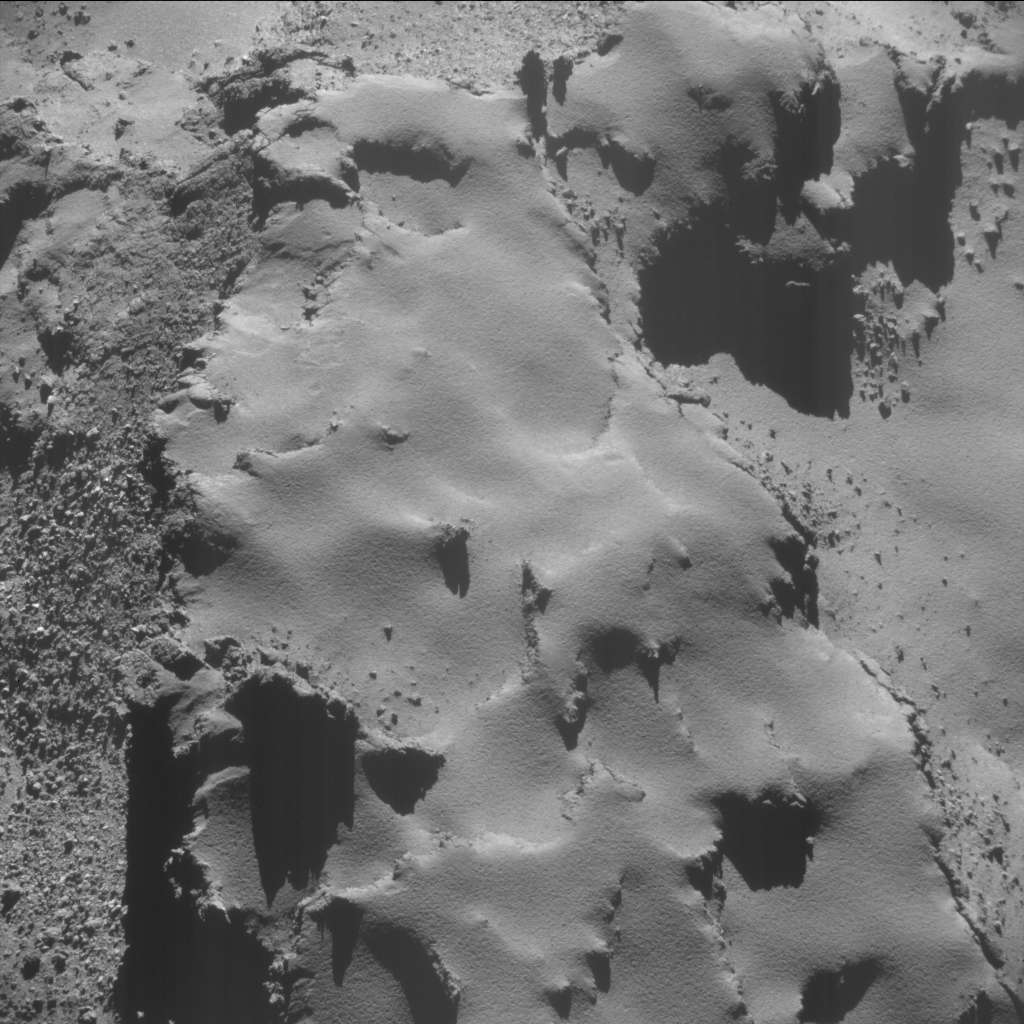This week’s CometWatch entry is an image of Comet 67P/Churyumov-Gerasimenko from Rosetta’s NAVCAM, taken on 16 July 2016 when the spacecraft was 9.5 km from the centre of the comet nucleus.

Enhanced NAVCAM image of Comet 67P/C-G taken on 16 July 2016, 9.5 km from the centre of the nucleus. The scale is 0.7 m/pixel and the image measures about 700 m. The faint vertical striping effect, especially visible in the upper right part of this view, is an image artifact. Credits: ESA/Rosetta/NAVCAM – CC BY-SA IGO 3.0
The view shows a portion of Ash, on the large comet lobe, in extraordinary detail, displaying the smooth coating of dust that characterises this region. The upper left corner of the frame reveals a small part of the neighbouring Aten region, which, in contrast to Ash, is not covered in dust.
Smooth material covering another region of the comet, Imhotep, also on the large lobe, was featured in another image from Rosetta’s OSIRIS narrow-angle camera, published yesterday on the OSIRIS Image of the Day.

OSIRIS narrow-angle camera image taken on 16 July 2016, when Rosetta was 12.8 km from Comet 67P/C-G. The scale is 0.22 m/pixel and the image measures about 450 m. Credits: ESA/Rosetta/MPS for OSIRIS Team MPS/UPD/LAM/IAA/SSO/INTA/UPM/DASP/IDA
The image was taken on 16 July, and also reveals boulders of various sizes (top left), rocky terrains (upper and right sides of the frame) and a number of the circular features characteristic of the Imhotep region (lower right).
The original NAVCAM image is provided below.










Discussion: 9 comments
Is it possible to take a picture of Philae on the comet’s surface?
Thanks
Do you have a picture of the comet on July 15 ?
Harvey’s percolating, when happening at a gravitational slope, flows down the hill. [Also plausible with little mass amounts of electrostatic micro-dust levitation].
This mechanism decant the particulate, creating differing kinds of depositions.
Smaller particulate travels farther down the stream. Toward the lower lands…
Could it be that dust like stuff is ejected material from the comet that eventually settles back to the surface. It covers the whole comet but it take a long while to settle. The most currently active regions blow it back away. So that this can be a guide to where the most active regions are?
@Dale,
Well, the southern hemisphere appears to be less dust covered than the north. Perhaps explains how MIRO was able to penetrate the dust in the south to find ice below. The south has a shorter, but more intense, summer than the north, due to the southern summer occurring around perihelion.
From all intriguing phenomena, still the more present is “lakritze”. Halfway a particulate bed, organics glued, exhibiting a ‘vitreous’ flow.
[This is an speculative description].
The ‘texture’|weaving of the “lakritze” follows the sublimative patterns of the subduing terrains. So, even if flowing, ‘texture’ remains geographically.